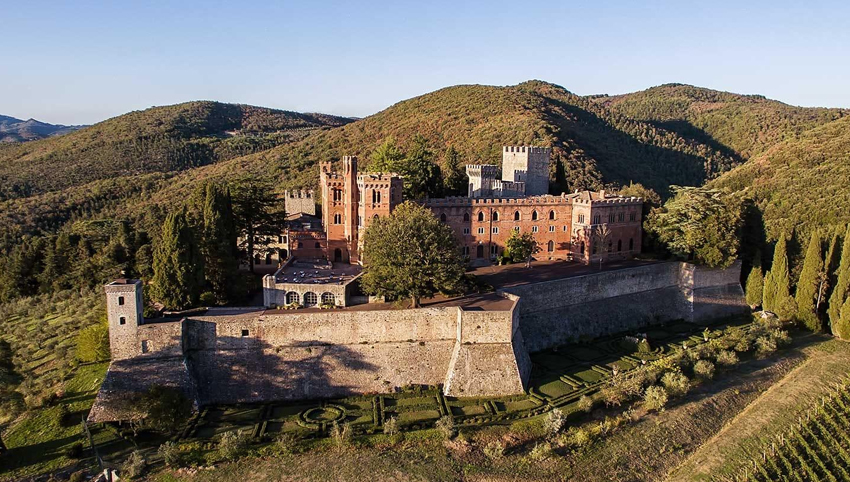I am about to visit the Castle of Brolio and the cellars of the Ricasoli family, with a certain reverence: in fact, the Ricasoli have contributed not only to writing the history of wine, but also that of Italy.
It will be Elisabetta Dona` delle Rose, granddaughter of Baron Ricasoli, who will guide me within the walls of this enchanting castle belonging to the family since 1141 and the last Florentine outpost before Siena.
The position of the castle is in fact ideal, both from a strategic point of view, dominating the hills in front of Siena, and from an oenological point of view; surrounded by 240 hectares of vineyards that include a varied texture of the soil: from silt and pebbles, to clay, marl, alberese and chalk, making Ricasoli by far the most representative of the Chianti Classico companies for territorial expressiveness.
Baron Bettino Ricasoli (1809-1880) became part of the Italian unification, holding the position of Prime Minister after Cavour for two terms: a man of science as well as politics, he took an interest in wine research, creating the first blend of Chianti in 1872, a tireless researcher, studied in depth the vine and its diseases, the different compositions of the land and experimented with innovative agronomic techniques.
The passion for science, research and innovation are inherited by Baron Francesco Ricasoli, who returns to the helm of the company in 1993. Since then the Baron has invested numerous resources and pioneered experimentation in his vineyards, and in the study of Sangiovese, determined to shape it in its most valuable expressions.
The research carried out aims to demonstrate how each single particle, based on the composition of the soil, the exposure and the type of Sangiovese planted, gives life to completely different and characteristic wines, not differently from when the Benedictine monks did in Burgundy.
However, research is not limited to the territory and winemaking, in fact, innovative techniques are used to improve sustainability and environmental impact, such as the sexual confusion of insects to avoid the use of pesticides, the use of organic fertilizers and of indigenous yeasts.
Despite the numerous hectares of vineyards, the harvest is carried out only by hand, selecting the best bunches in several stages. The vinification is carried out with the aim of enhancing the territorial characteristics, without going to modify the characteristics in the cellar, making a wise use of the woods that never dominate the wine.
Filippo Vannini, export manager of the company, guides me in tasting the company’s flagship wines, which strike me for their differences: the muscular power of Historia Familae, a vibrant and deep super Tuscan, with aromas of spices and earth, with young and lively tannins.
And here is the Colledila` cru di Sangiovese that enchants me with its scent of Florentine lily and wisteria, and a savory and silky sip that reminds me of a Pinot Noir.
These two wines will therefore become part of the eternal wine collection of the Italian Wine Crypto Bank, certain that their evolution will offer an unforgettable sensory experience.
The Wine Value Chief Analyst – Italian Wine Crypto Bank

